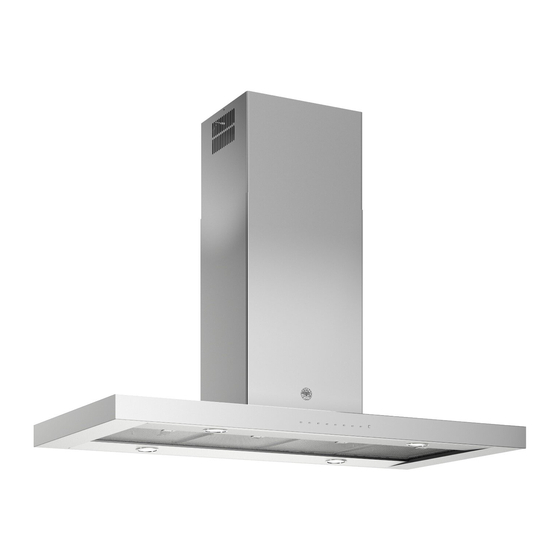Gaggenau AI 542-120 Operating And Assembly Instructions Manual - Page 14
Browse online or download pdf Operating And Assembly Instructions Manual for Ventilation Hood Gaggenau AI 542-120. Gaggenau AI 542-120 20 pages. Freely suspended insular hood

6. Assembly instructions
6.1
Technical data
Weight without support frame and LK:
AI 540 / AI 541:
35 kg
AI 542 / AI 543:
33 kg
Weight with support frame and LK:
max. 60 kg
Dimensions : 1198 x 700 mm
Electrical connection
Pay attention to the rating plate data.
The mains connecting cable must at least
correspond to the type H 05 VV-F G 0,75.
The appliance must only be connected by an
authorised specialist. The specialist is
sible for perfect functioning of the appliance at its
installation location. He must explain the operating
principle of the appliance to the user with refe-
rence to the operating instructions. He must explain
to the user how the appliance can be isolated from
the mains whenever required.
Connection possibilities
The plug of the connecting cable is inserted into
the socket on the ceiling. If this is not possible, the
disconnection of all the poles of the appliance from
the mains must be achieved by way of the domestic
fuse, or by using an accessible disconnecting device
with a contact gap of at least 3.0 mm.
12
6.2 Installation
The applicable regulations of the energy supply
companies and the
regulations
the hood.
The
minimum distance from the cooking surface
to the bottom edge of the hood is 600 mm for
electrical appliances. The
from the bottom edge of the pot stand to the bottom
edge of the hood is 700 mm for gas appliances.
The hood can be used in the exhaust or circulating
air mode . The exhaust air can be routed into a
separate exhaust air shaft or directly into the open
through the outside wall.
It is not allowed to pass the exhaust air into a flue
or exhaust air chimney that is in operation or into a
respon-
shaft that is linked to the heating basement. Consult
the chimney sweep responsible for your district
whenever you wish to pass the exhaust air into a
chimney that is not in operation.
During the course of planning, a chimney sweep
must be consulted if a room air-dependent hearth
is operated in the same room as the one in which a
hood is operated in the exhaust air mode. Adequate
incoming air must be ensured. The applicable
construction and safety regulations must be
observed.
Adequate incoming air must be ensured if a wood,
coal, gas or oil heater or an open hearth is operated
in the same room as the one in which the hood is
installed.
Safe operation is possible whenever the partial
vacuum in the place where the firing equipment
is installed does not exceed 4 Pa (0.04 mbar).
This can be achieved whenever the air needed for
combustion is able to enter through openings that
cannot be sealed, for example in doors, windows,
incoming/exhaust air wall boxes or other technical
means.
regional construction
must be observed when installing
minimum distance
